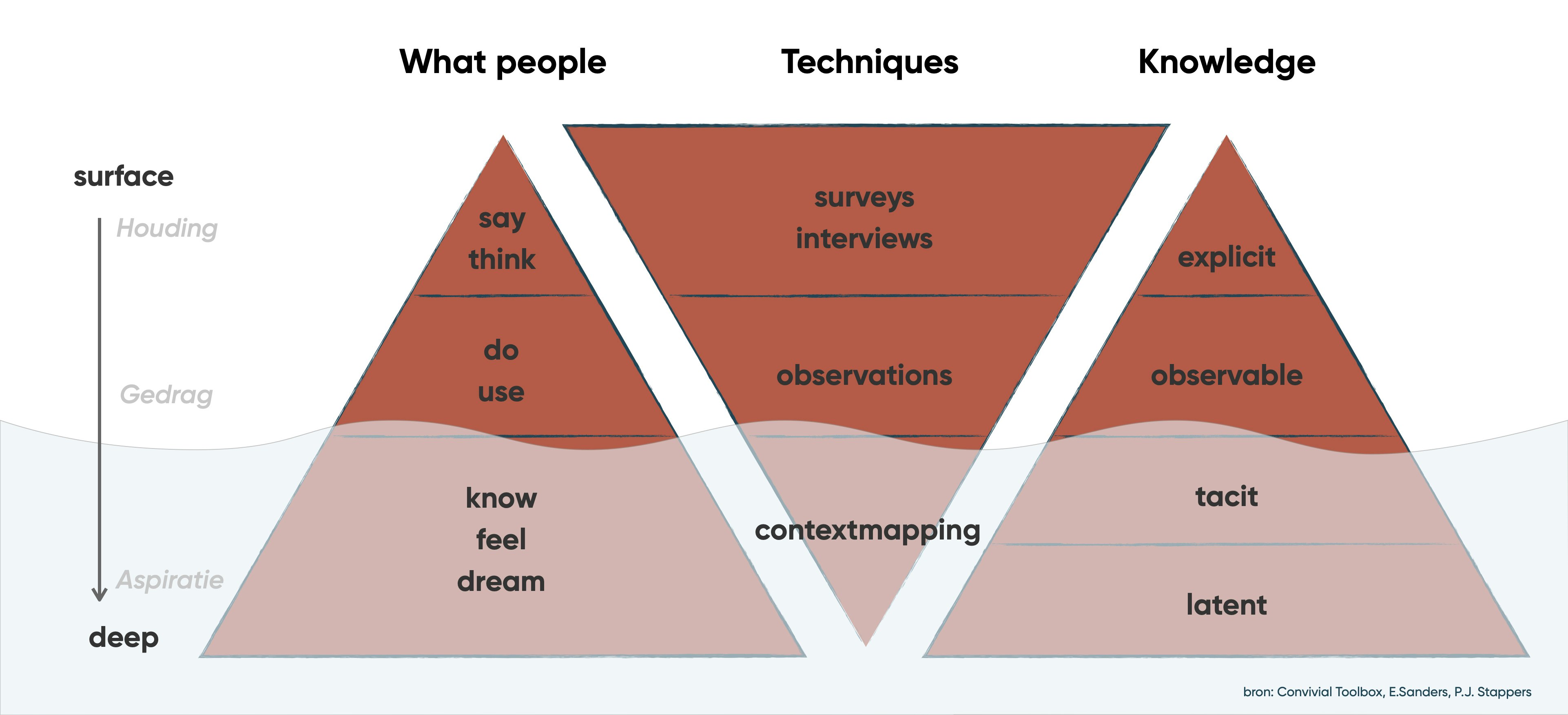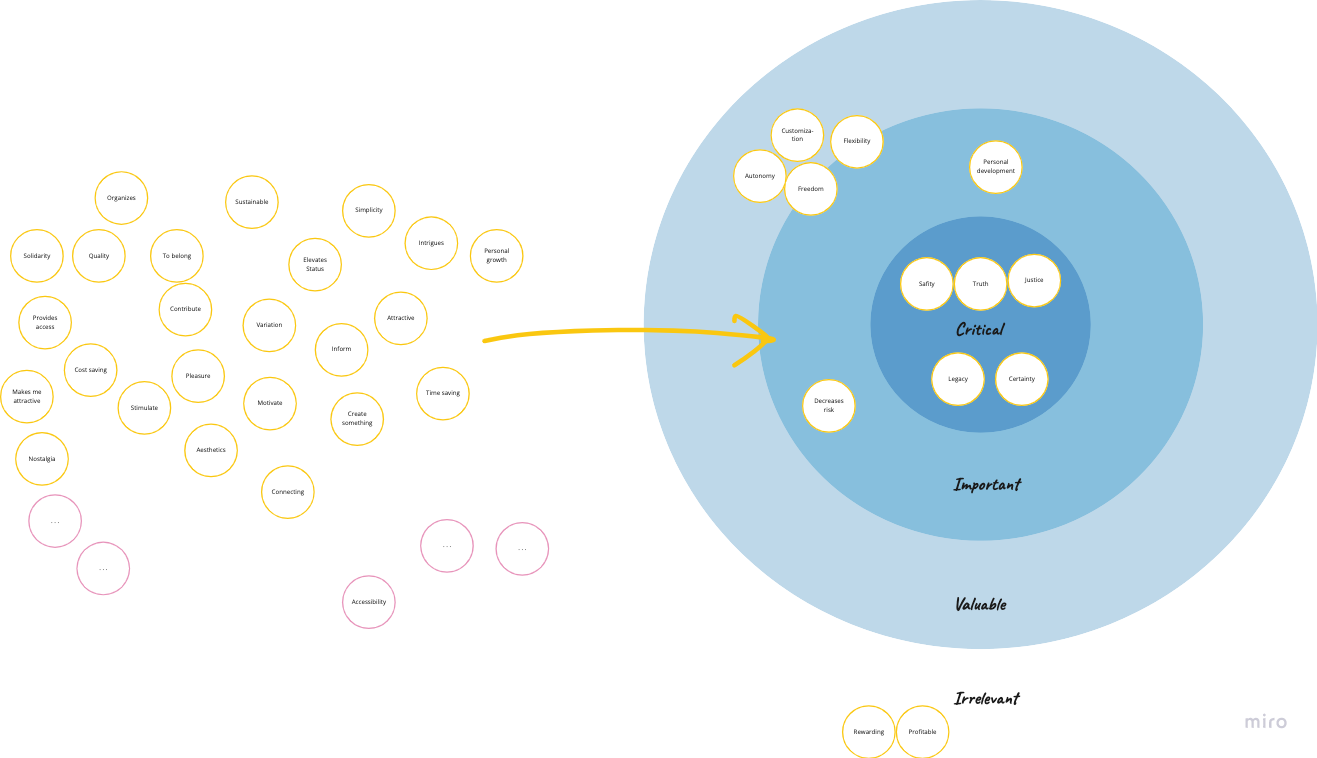Useful platforms for exploratory value research
Author
Joëlle van Schaaik
Published
17 August 2022
Reading time
5 minutes
People find it increasingly important that their values align with the values of organizations with which they enter into a relationship in one way or another. People reflect these values in their choice of a brand or organization. If you want to offer relevant products and services, it is, therefore, crucial that you know which values your target group finds important. But how do you do that? Which platforms can support this?

How do you conduct value research?
You can conduct qualitative exploratory research to determine which values are essential for an individual. Values are often about things that people are not always fully aware of. They make certain choices in their work and life but cannot always easily indicate why they make those choices. As a researcher, you'll have to make a little more effort to find out. It is what we call ‘tacit of latent knowledge’. Several methods provide support to get closer to that latent knowledge or information. Examples of these methods are:
- Circles of values. Using three concentric circles (not important, important, super important), you ask your respondent to prioritize different values.
- In-depth interview. In this question, you do not simply start from question-answer but ask further questions on specific topics. With the 'Laddering' technique, you repeatedly ask (7x) for the why to get closer to the actual reason (or values).
- Context mapping. With this generative and creative technique, you stimulate the respondents to make one or more mood boards with images, words, and drawings that express their feelings and associations. This activity stimulates the brain differently. Making it easier to get to the 'hidden information. In the discussion of the mood boards, you can ask why the mood board looks the way it does. Experience shows that this makes it easier for respondents to indicate what they find important and what their values are. In preparation for a context mapping session, you can, for example, give a diary study. Ensuring they get some context and are already warmed up for the assignments.

Exploratory research, as just mentioned, can be carried out both offline and online. When you conduct this research offline, you can use physical resources to complete assignments. Think of old magazines to make a mood board. When conducting online exploratory research, you need platforms that support this way of working. Which platforms are useful?
Platforms for online value research
The platforms we currently use for this are Miro (an online whiteboard) and Teams (for video calls). We use Miro to create diaries and mood boards. Miro offers the possibility to set everything up yourself, which works nicely for putting together various creative assignments. In addition, Miro is user-friendly, making it relatively accessible for respondents to work in Miro. The conversation with the respondent runs via Teams. Here, with the respondent's consent, we also make video recordings of the conversations.
When it comes to working with Miro and Teams, I see several points for improvement, namely:
- Miro and Teams work well for a survey with few respondents. If you want to scale up to a more significant number of respondents, processing the results becomes labor-intensive. For example, if you have to process a circle of values from seven respondents, you can still quickly process the results manually. As soon as you increase this to 20 or more respondents, that becomes a lot more difficult, and you prefer a platform that supports you.
- In Teams, the respondent sees everyone in the call, which sometimes increases the pressure quite a bit for the respondent. In addition, you can make recordings, but it may not be easy to edit them. If you need to change a recording, you should do this with a video editing tool.
- It isn't easy to share the research with the team across different platforms. Moreover, you often prefer not to share the raw data but rather share a selection that you find most relevant.
How can research platforms support you?
The range of research platforms is enormous. It varies from large platforms where you can find every method you can think of to small platforms specializing in one method. The platform must offer creative freedom, in which you can set up your research.
Two large research platforms that offer many possibilities are Maze and Userzoom. Maze provides methods in the form of templates. You can choose from existing templates or create your own templates with the premium version. The advantage of a large platform like Maze or Userzoom is that you can keep all your research results in one place. You can have both the creative assignments carried out on this platform and the in-depth interviews, of which you can then easily edit the recordings. In addition, it helps with the automatic processing of results (e.g., adding up prioritization scores) so that you as a researcher can draw conclusions more easily.
You can also limit your use to the recording functionalities of a research platform. Platforms such as Lookback and User Testing are strong in this. In Lookback, for example, you can conduct in-depth interviews. During the interview, several observers may be present who take notes. The respondent does not notice this, so she experiences less pressure from the setting. User Testing focuses more on testing an experience, so a respondent can film himself using a website and a physical product. Both platforms can easily add highlights to specific moments in the recording and cut fragments directly from them.
Conclusion
Which platform suits your assignment depends on your research goal and the methods that fit it. If you use different methods, it is interesting to look at the major platforms such as Maze and Userzoom. These platforms are, therefore, a lot more expensive in terms of the license.
Furthermore, it depends on the number of respondents you need. If you are surveying a more significant number of respondents, looking at a platform that supports processing the research results is relevant. Maze and Userzoom also fit in well here. With a smaller number of respondents, you can consider Miro. Using this digital whiteboard is also more favorable in terms of license costs. For video recordings of your interviews, you can then use Lookback.
Do you also regularly carry out value research? I'm curious about your experiences with different platforms.
About the author

True experience
Research

